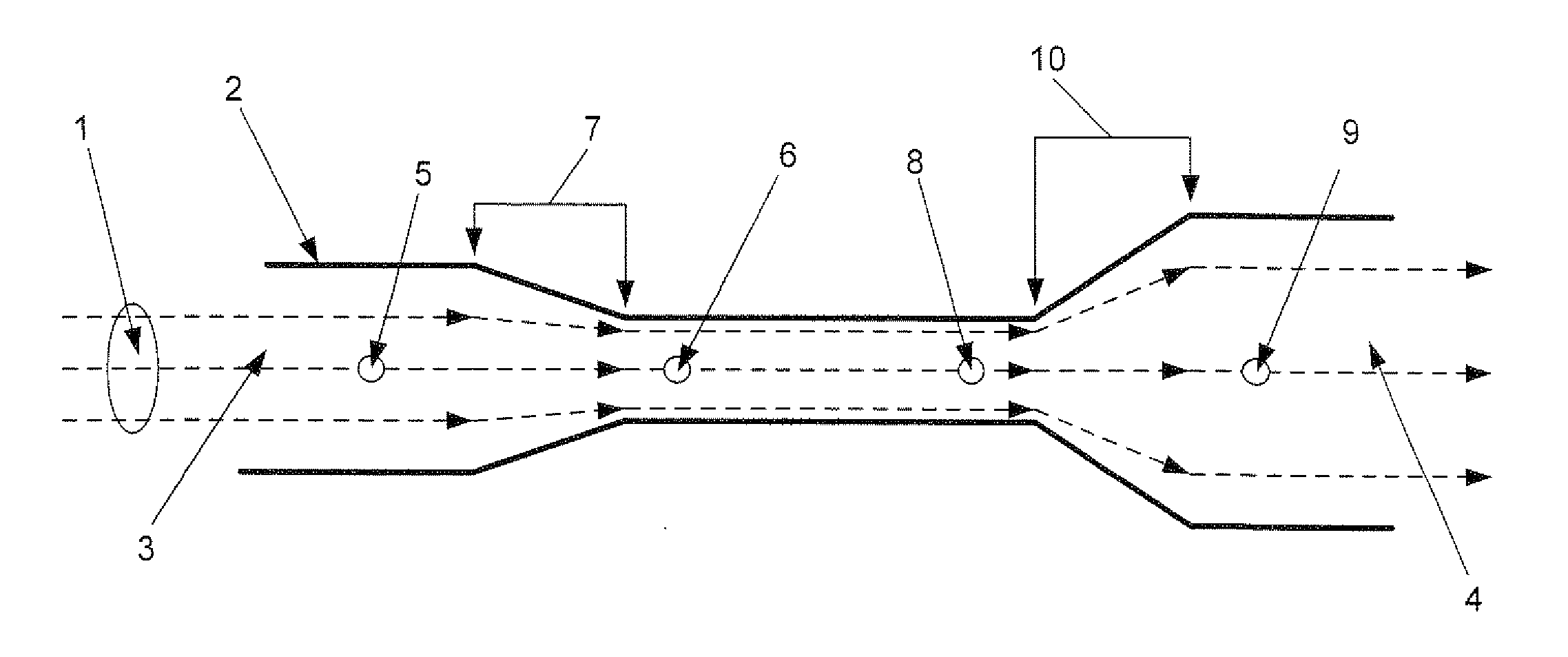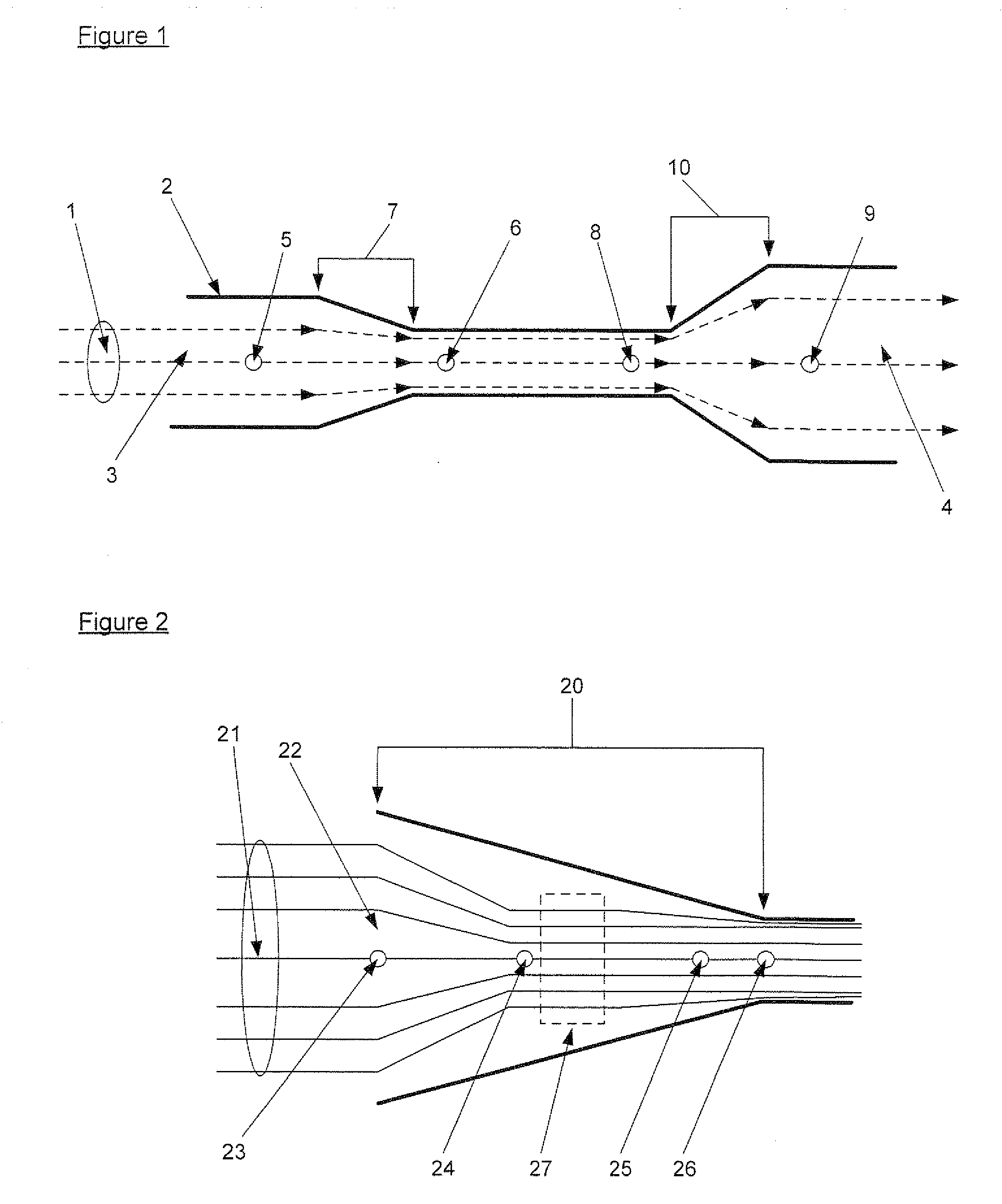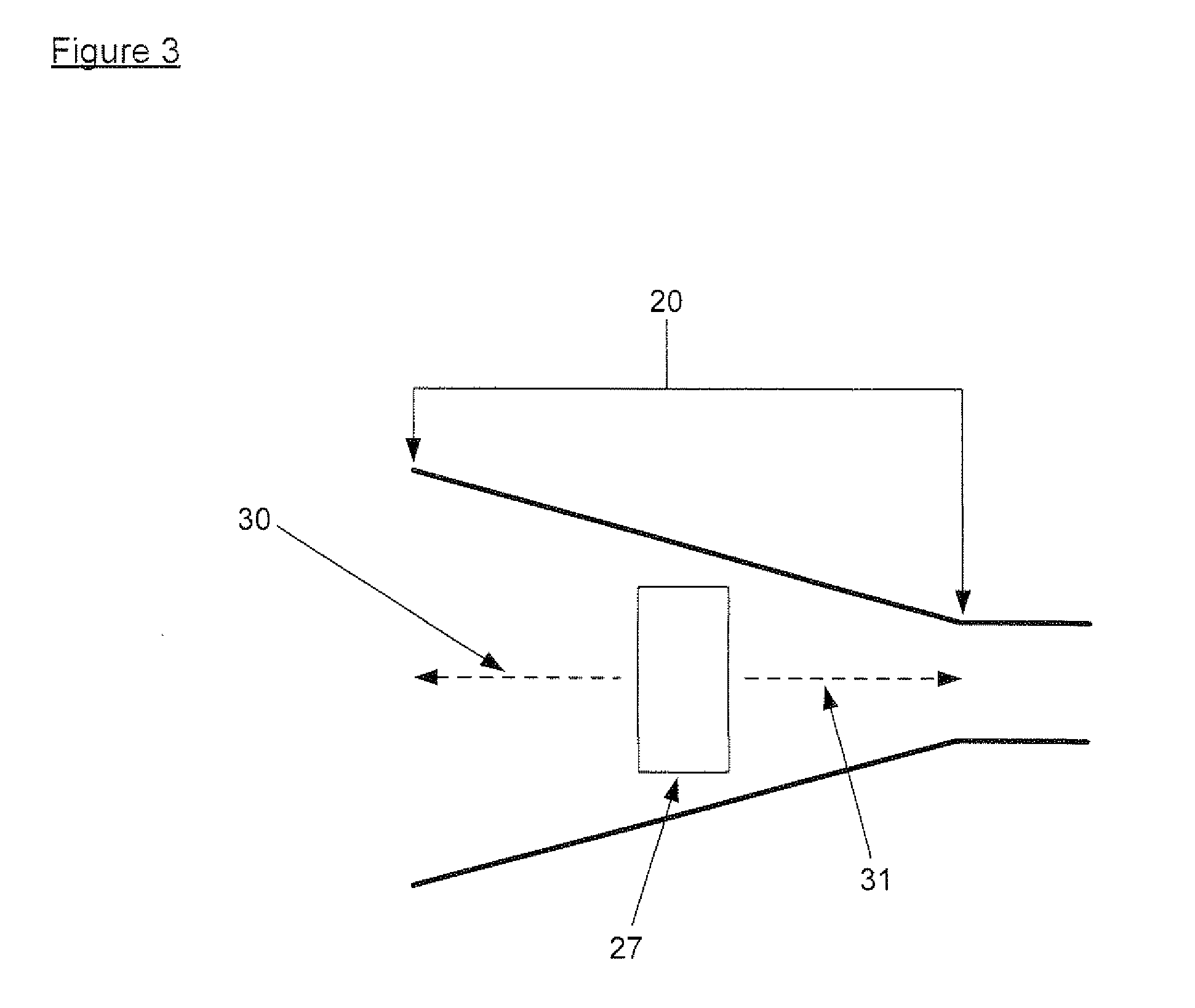Supplemental power source
a technology of supplemental power source and micro-wind turbine, which is applied in the direction of sustainable buildings, machines/engines, and electric generator control, etc., to achieve the effects of increasing the efficiency of micro-wind turbine, increasing the efficiency of the turbine, and extracting more power
- Summary
- Abstract
- Description
- Claims
- Application Information
AI Technical Summary
Benefits of technology
Problems solved by technology
Method used
Image
Examples
Embodiment Construction
[0090]The present invention takes advantage of a number of well known principles in the fields of fluid dynamics and magnetism. Bernoulli's law is one such principle. Bernoulli states that an increase in speed of a fluid in a closed environment simultaneously results in a decrease in pressure in the fluid's potential energy. FIG. 1 illustrates this principle for a fluid 1 moving through an enclosure 2. Enclosure 2 has an inlet 3 and an outlet 4.
[0091]Assuming that fluid 1 is not compressible and the walls of enclosure 2 are not expandable; the volume of fluid leaving the enclosure through outlet 4 must equal the volume entering the enclosure through inlet 3. Thus, the sum of the kinetic and potential energy of fluid 1 remains constant throughout enclosure 2. For this to be the case, the pressure and flow speed of fluid 1 will be different at different locations within enclosure 2 in accordance with Bernoulli's law.
[0092]For example, fluid pressure at location 5 in FIG. 1 will be low...
PUM
 Login to View More
Login to View More Abstract
Description
Claims
Application Information
 Login to View More
Login to View More - R&D
- Intellectual Property
- Life Sciences
- Materials
- Tech Scout
- Unparalleled Data Quality
- Higher Quality Content
- 60% Fewer Hallucinations
Browse by: Latest US Patents, China's latest patents, Technical Efficacy Thesaurus, Application Domain, Technology Topic, Popular Technical Reports.
© 2025 PatSnap. All rights reserved.Legal|Privacy policy|Modern Slavery Act Transparency Statement|Sitemap|About US| Contact US: help@patsnap.com



